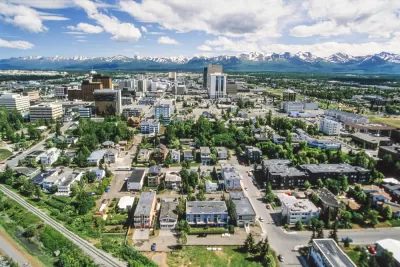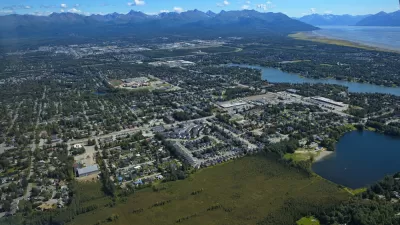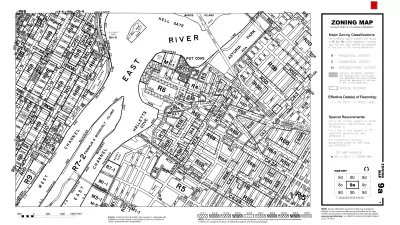A revised, scaled-back version of a zoning reform effort in Anchorage would concentrate the proposed consolidation of residential zoning districts in one part of the city.

Anchorage Assemblymembers have scaled back the zoning consolidation proposed by the “Housing Opportunities in the Municipality for Everyone” (HOME) an initiative that previously would have reduced the number of residential zoning district’s in the city to one.
Anchorage Assembly members Meg Zaletel and Daniel Volland have revised the proposed zoning changes into a more “targeted” approach, according to a paywalled article by Alex DeMarban for the Anchorage Daily News.
“The new proposal would still sharply reduce the city’s residential zoning categories, from 15 to five, but it would be based on land-use categories spelled out in the 2040 land-use plan adopted six years ago,” writes DeMarban, citing a document published ahead of an assembly meeting scheduled for August 22.
Instead of combining all residential zoning into one district, as proposed in the earlier version of the HOME initiative, the revised proposal “would only apply to the Anchorage Bowl, not Eagle River and Girdwood,” adds DeMarban.
“The original proposal would have shrunk the city’s residential zones to essentially one category, divided only by areas with city-provided plumbing and areas like those near the Hillside that use wells and septic systems,” adds DeMarban. “It also proposed a 1 1/2-year process to rewrite residential sections of Title 21, the land-use code, a period critics said was far too short.”
More details on how the revised HOME initiative reflects the vision laid out in the city’s 2040 land use plan are included in the source article.
FULL STORY: Addressing criticism, Assembly members propose more modest overhaul of Anchorage zoning

Study: Maui’s Plan to Convert Vacation Rentals to Long-Term Housing Could Cause Nearly $1 Billion Economic Loss
The plan would reduce visitor accommodation by 25,% resulting in 1,900 jobs lost.

North Texas Transit Leaders Tout Benefits of TOD for Growing Region
At a summit focused on transit-oriented development, policymakers discussed how North Texas’ expanded light rail system can serve as a tool for economic growth.

Using Old Oil and Gas Wells for Green Energy Storage
Penn State researchers have found that repurposing abandoned oil and gas wells for geothermal-assisted compressed-air energy storage can boost efficiency, reduce environmental risks, and support clean energy and job transitions.

Santa Barbara Could Build Housing on County Land
County supervisors moved forward a proposal to build workforce housing on two county-owned parcels.

San Mateo Formally Opposes Freeway Project
The city council will send a letter to Caltrans urging the agency to reconsider a plan to expand the 101 through the city of San Mateo.

A Bronx Community Fights to Have its Voice Heard
After organizing and giving input for decades, the community around the Kingsbridge Armory might actually see it redeveloped — and they want to continue to have a say in how it goes.
Urban Design for Planners 1: Software Tools
This six-course series explores essential urban design concepts using open source software and equips planners with the tools they need to participate fully in the urban design process.
Planning for Universal Design
Learn the tools for implementing Universal Design in planning regulations.
Ascent Environmental
Borough of Carlisle
Institute for Housing and Urban Development Studies (IHS)
City of Grandview
Harvard GSD Executive Education
Toledo-Lucas County Plan Commissions
Salt Lake City
NYU Wagner Graduate School of Public Service




























